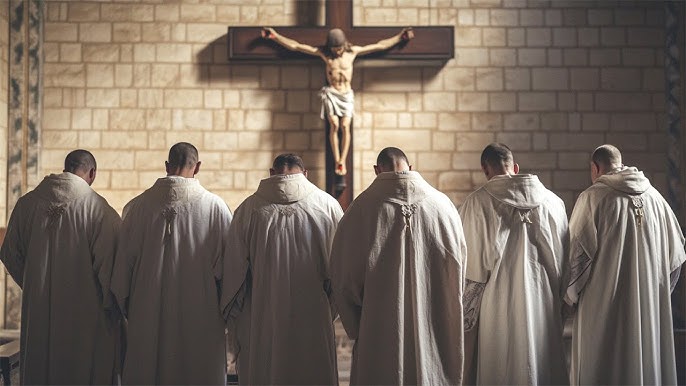The Monastic Life in Christian Tradition
In the Christian tradition the ascetic life is commonly referred to as the “monastic” life or “monachism”, which comes from the Greek root monos meaning: “single”, ‘alone’. The basic idea of monastic life is seclusion or withdrawal from the world or society (fuga mundi) so the way of life also includes physical separation. Thus the lives of eremites, anakoret and senobit can be classified as monastic.
According to the writings of monastic authors in the Philokalia (IV-XV centuries), monastic life aspires to realize the words of Jesus, “Therefore you shall be perfect, just as your heavenly Father is perfect” (Mt 5:48). The pursuit of perfection in life was underscored by the Church in the Second Vatican Council document, Perfectae Caritatis art. 7 and 9:
"For these offer to God a sacrifice of praise which is outstanding. Moreover the manifold results of their holiness lends luster to the people of God which is inspired by their example and which gains new members by their apostolate which is as effective as it is hidden."
"The principal duty of monks is to offer a service to the divine majesty at once humble and noble within the walls of the monastery, whether they dedicate themselves entirely to divine worship in the contemplative life or have legitimately undertaken some apostolate or work of Christian charity. Retaining, therefore, the characteristics of the way of life proper to them, they should revive their ancient traditions of service and so adapt them to the needs of today that monasteries will become institutions dedicated to the edification of the Christian people."
From the second century, Christian monastic movements began to emerge. In the beginning there were communities of virgins who were called to consecrate themselves as the bride of Christ. Even as early as the time of Paul, there were women who did not marry in order to consecrate their lives to Christ alone (1Cor 7:34).
From early Christian literature we recognize names such as: Margareta of Antioch, Agnes of Rome, Eufemia of Chalcedon and Lusia of Syracuse, Marcellina the sister of St. Ambrose, and Genevieve. The Rubiah community is recorded to have been founded by Pakomius and pioneered by his sister Maria in Thebaid, Egypt between 318-332.
There were also individual hermits or monks, known as devotus and later eremites, who initially lived on the outskirts of forests or deserts and later in remote places like the wilderness. These ascetics led solitary lives with much fasting, abstaining from meat and wine and supporting themselves with a few small handicrafts. Only a little was taken to provide for themselves and the rest was given to the poor.
The first famous eremite was Paul the Hermit (230-341) from Egypt. He felt called to live only with God and contemplate Him all the time. The second was St. Anthony the Great of Egypt (251-356) and is known as the Monastic Father for pioneering the establishment of monasteries. St. Anthony was called to be a monk through the Word in Matthew 19:21, which reads: Jesus answered, “If you want to be perfect, go, sell your possessions and give to the poor, and you will have treasure in heaven. Then come, follow me.”


Pertapaan Trappist Lamanabi
Desa Lamanabi RT004/RW002, Kecamatan Tanjung Bunga, Kabupaten Flores Timur 86251, Nusa Tenggara Timur
© 2024. All rights reserved.
Bandara terdekat: GEWAYANTANA (LKA) - Larantuka
